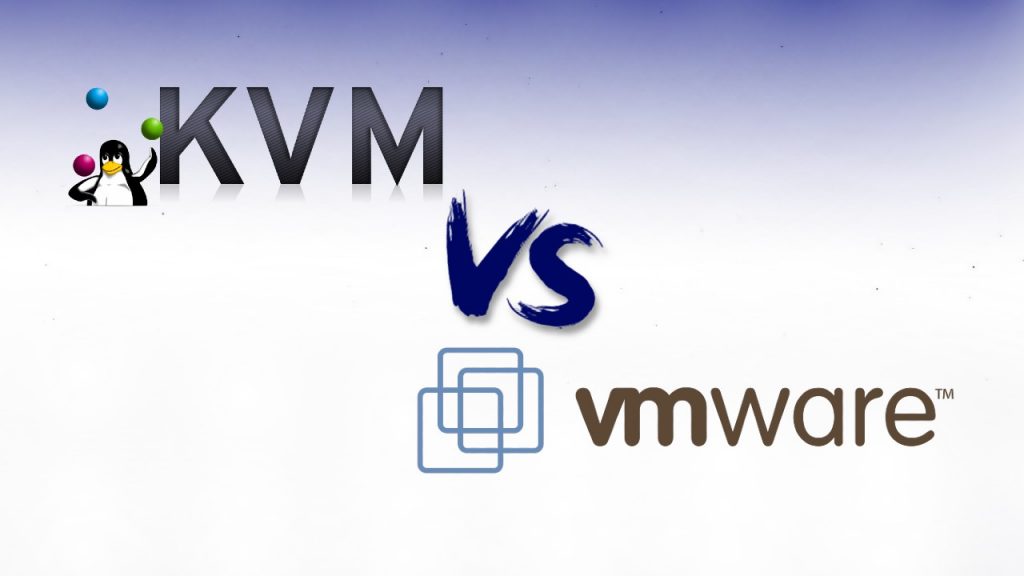A hypervisor is a program, hardware, or firmware combination that produces, executes, and manages virtual machines ( VMs). The computer running a hypervisor is called its host, whilst each VM on the host is known as a guest. A hypervisor provides the guests with a virtual operating platform that manages their operating systems (OSs), enabling multiple operating systems to share virtualized resources on the same host.
There’s plenty of variety between conventional vendors and open source alternatives. However, the selection of a hypervisor often comes down to a choice between VMWare and Kernel-based Virtual Machine (KVM).
VMware is a popular virtualization option, and offers the ESXi hypervisor and vSphere virtualization platform. While, Kernel-based Virtual Machine (KVM) is an open source option and is part of Linux.
Let us compare these two in terms of:-
- Performance
- Integration
- Cost
- Complexity
- Maturity
- Scalability
- Functionality support
Performance
Hypervisors comes in to two categories, which can influence their performance.
Type 1: Most businesses use Type 1 hypervisors. It is also known as “bare metal” hypervisors, run directly on the physical hardware, and the OS of each guest runs on top of the hypervisor. These hypervisors typically allow some guests to control the hypervisor.
Type 2: Desktop hypervisors are usually Type 2 hypervisors. It is also known as host hypervisor, operates on the physical hardware within an operating system. Every guest’s OS then runs atop the hypervisor.
Some of the most important things to remember is how the hypervisor’s performance will impact your infrastructure. Both KVM and ESXi are hypervisors of Type 1, which mean they should outperform a type 2 hypervisor.
ESXi typically takes more time than KVM to build and launch a server. ESXi often performs slower while operating servers, although this difference may be insignificant for standard loads. As for speed, KVM runs applications at near-native speeds, faster than other hypervisors in the industry.
Integration
The hypervisors use different methods to interact with the host’s physical hardware. ESXi uses the management platform of VMware which means you will use other items in the control stack of VMware. This can also increase the requirements for the hardware.
While with KVM, you would not have the same limitations, as it is open source and can be integrated with your current infrastructure and with different Linux and Windows platforms.
Cost
The main difference between KVM and the VMware is the cost. KVM clearly wins over VMware on the basis of cost. KVM is open source, so it does not incur any additional cost to the user. It is also distributed in multiple ways, often as part of an open-source OS.
With VMWare, you will need to purchase licenses for different products, and you will be locked into an enterprise license agreement (ELA). While an ELA can save you a budget up front, incremental increases in ability and efficiency in return will raise your costs over time. In general, KVM has lower overall ownership costs.
Complexity
A comparison between KVM and VMware also shows a clear difference in the size of the base code which affects the maintenance costs of a hypervisor. KVM was initially released to take advantage of processor extensions that enabled them to virtualize guests without binary code being translated.
VMware is believed to be more complex than KVM as it have over 6 million LOC, although this cannot be verified since its source code is not publicly available. This total does not directly affect performance, since VMWare uses guest virtualization hardware extensions. Nevertheless, the original code never fully been completely rewritten.
Maturity
Both KVM and ESXi are mature and robust hypervisors which can accommodate the workloads of enterprises. However, since it is open source, KVM is more widely deployed, and is included in many packages such as Redhat Enterprise Virtualization (RHEV). Also KVM supports more functions than any other hypervisor.
Scalability
Generally speaking, KVM is more scalable than VMware, primarily because vSphere has some restrictions on the servers that it can handle. In addition, VMware has introduced a large number of Storage Area Networks (SANs) to support various vendors. This feature means VMware has more storage options than KVM, but it also complicates the storage support for VMware when it is scaling up.
Functionality support
With VMware, you will get enterprise-level support as part of your ELA. With KVM, you will need to rely on support from the open source community and your own IT organization.


